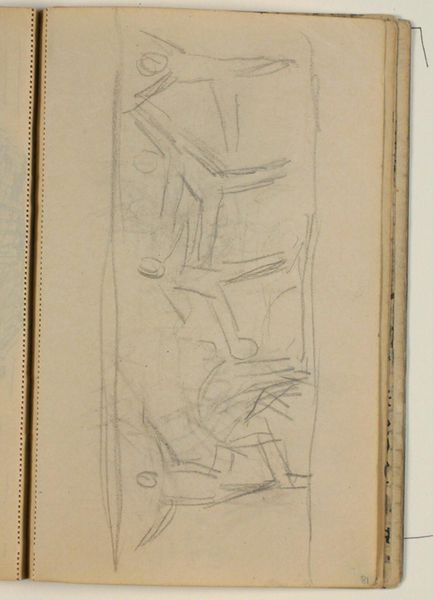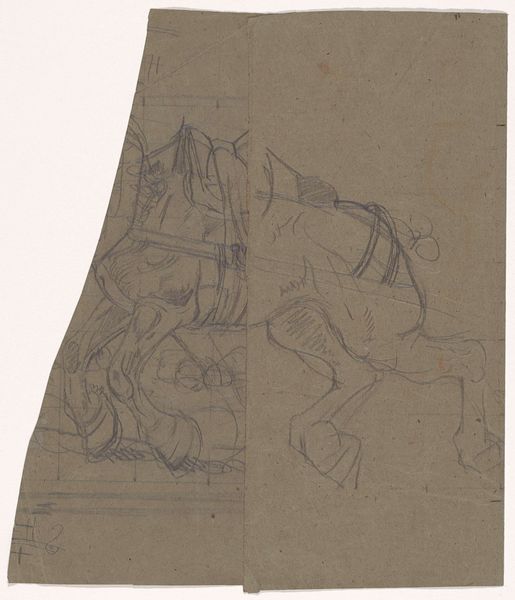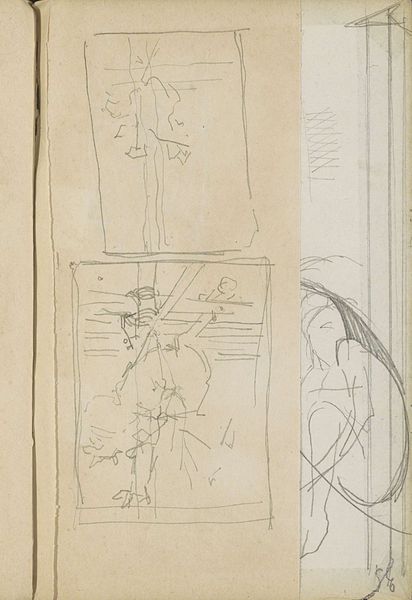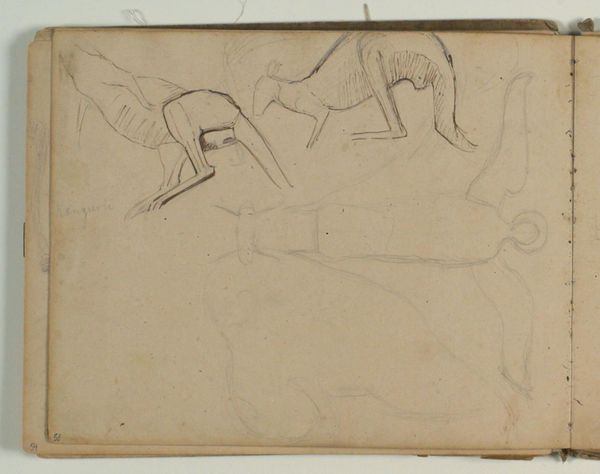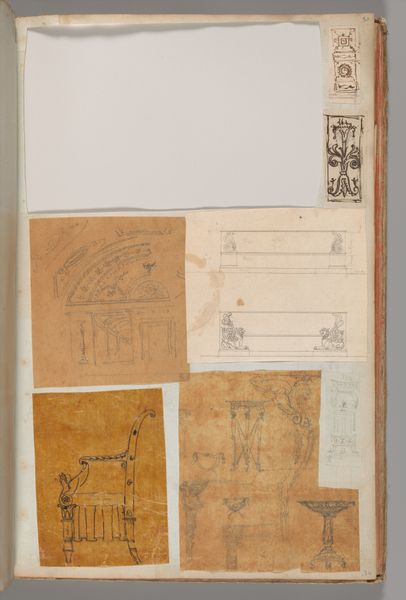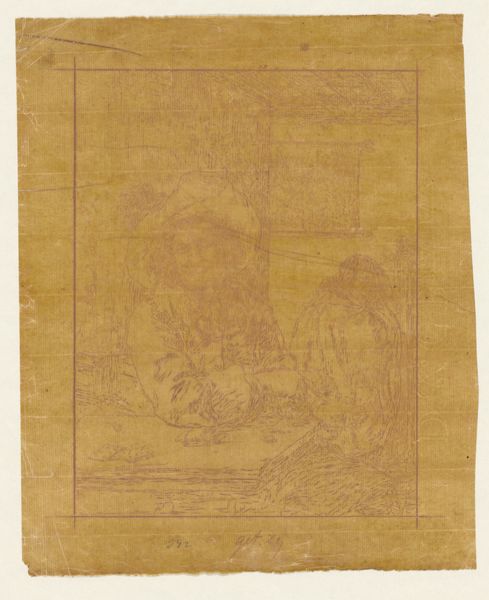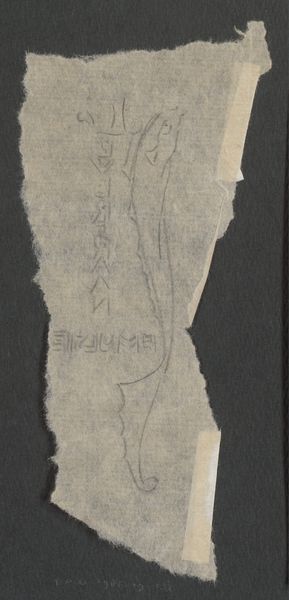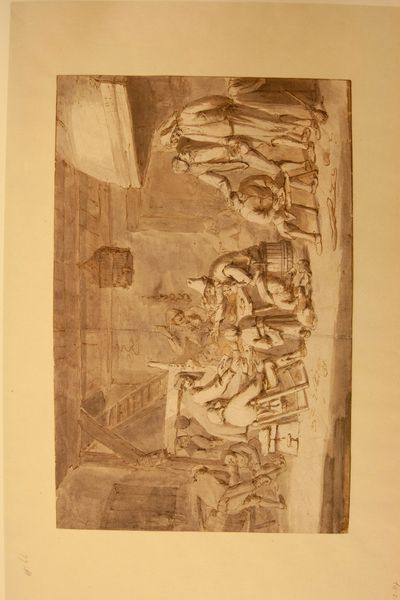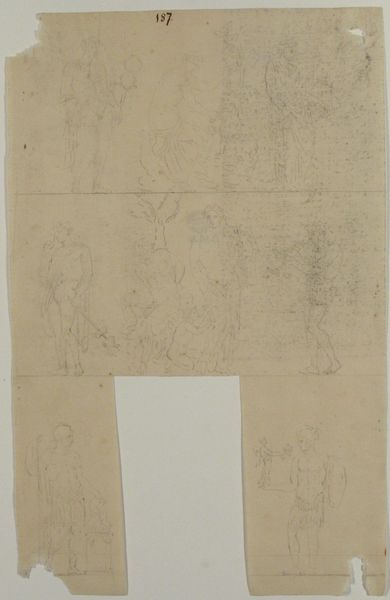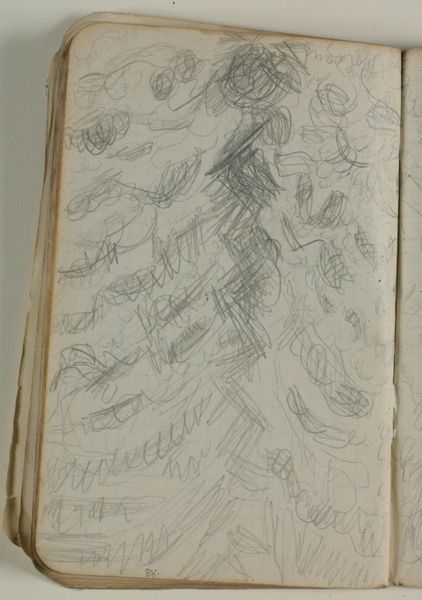
Page from a Scrapbook containing Drawings and Several Prints of Architecture, Interiors, Furniture and Other Objects 1795 - 1805
0:00
0:00
drawing, print, paper, pencil, architecture
#
drawing
#
neoclacissism
#
aged paper
#
toned paper
# print
#
furniture
#
paper
#
pencil
#
arch
#
sketchbook drawing
#
architecture
Dimensions: 15 11/16 x 10 in. (39.8 x 25.4 cm)
Copyright: Public Domain
Curator: This work, dating from around 1795 to 1805, is attributed to Charles Percier. Titled "Page from a Scrapbook containing Drawings and Several Prints of Architecture, Interiors, Furniture and Other Objects," it's a mixed-media piece featuring drawing and print on paper. Editor: Immediately, I'm struck by the unfinished, almost dreamlike quality. The aged paper and the skeletal architectural sketches evoke a sense of history and the ephemeral nature of design. Curator: It is neoclassical in style. Looking closer, one sees how the various objects presented --the furniture, interior designs, and other sketched components offer clues as to the style and even manufacture of these upper-class consumer goods at the turn of the century. It acts like a catalogue page from which new interior designs and tastes could be made. Editor: That's fascinating, to consider this scrapbook page as a kind of proto-Pinterest board for the elite! Given the political turbulence of the late 18th century, especially the French Revolution, the restrained elegance of neoclassicism can be interpreted as a deliberate choice—a retreat into order and established forms in the face of social chaos. How do you see this scrapbook speaking to these power dynamics, not merely aesthetically, but also politically, and economically? Curator: By understanding it was, literally, *made*. From the paper production and preparation itself, to the methods of design, drawing, and print, we are invited to consider both what the items would have cost to fabricate *as well as* what these designs communicated about power, taste, and consumption at the time. To ask where that raw paper comes from and where and by whom the final items of furniture or archway trim might be physically constructed really gives perspective on social hierarchy. Editor: Exactly. This image reveals the layers of social structures inherent even within something as seemingly benign as interior design. It's a snapshot of how power reproduces itself, aesthetically and materially. Curator: Well, that reframes my perspective, somewhat. Editor: Always more to find the closer you look.
Comments
No comments
Be the first to comment and join the conversation on the ultimate creative platform.
